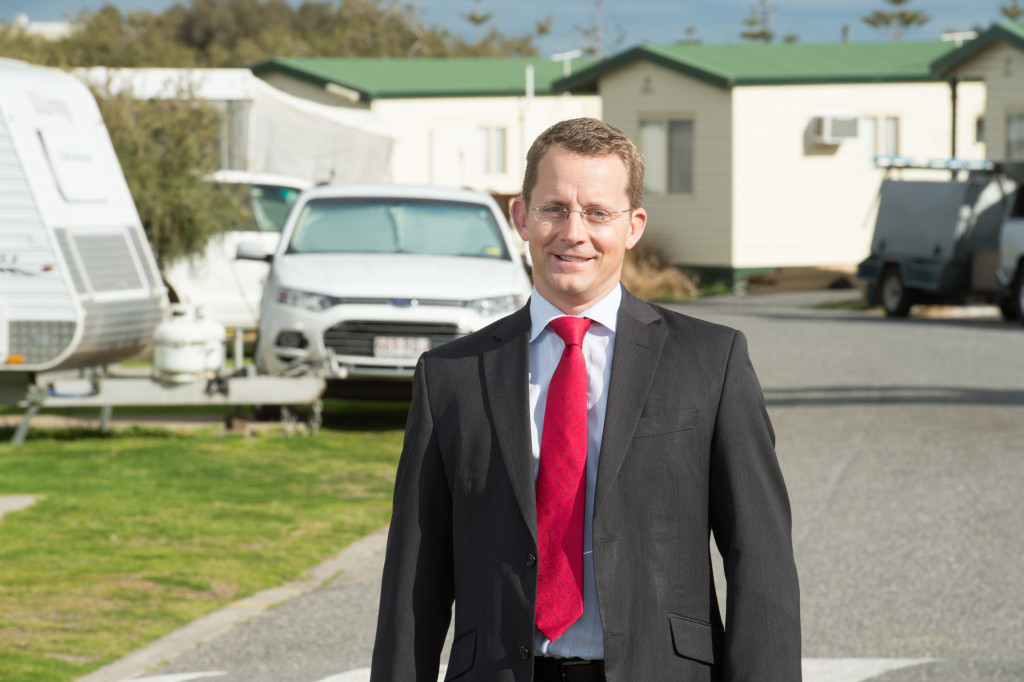Institution: Stanford Graduate School of Business (USA)
Course: Executive Leadership Development Program
Background
As the CEO and a founder of Discovery Holiday Parks (Discovery), I have had little opportunity to focus on my own professional development, having put all my energy into growing others and establishing the business.
Following three different private equity owners, Discovery is now majority owned by a long-term shareholder in Sunsuper. Moving from short-term shareholders, with a focus on short-term profitability, we are now in an environment where Sunsuper is seeking a long-term strategy so the business can look through cycles and focus on a 20-30 year strategy. This strategy has required a shift in my thinking, a change in the types of people in my leadership team, and a different stance in my leadership style. My recent education at Stanford has certainly helped guide me through some of these challenges.
Quite separately, having come from the services industry (KPMG and Rothschild), much of my operational management and leadership skills have been developed on the job at Discovery, and I realised that if I wanted more from my people, I had to consider further education.
The application process
The application process was fairly straightforward, but it did require a fair amount of internal reflection on my leadership style. Geoff Vogt (ILF CEO) was extremely helpful during the application process, and without his encouragement I probably wouldn’t have applied. Having never applied for a grant before, I was unsure at first, however, once I understood the process and read through the application form, it wasn’t too complicated. My recommendation to future applicants is to take the time in researching the most appropriate course for you as there are literally hundreds to choose from, and everyone responds differently to different types of education. Then once you think you have narrowed your selection, try and speak to others that have completed the course to get their feedback.
Having completed the two stage application process, I was delighted to learn that I had been short listed for an interview with a Board panel. Walking into the interview panel I was initially pretty nervous, but after just a few minutes the panel relaxed some of their questioning, focusing on our major shareholder, Sunsuper, a Queensland superannuation fund. The panel was concerned that Discovery’s head office would relocate from South Australia to Queensland, and what it would mean for me and the leadership team. The ILF is a South Australian initiative, and it is important that you can demonstrate the benefits to South Australia. Once I explained that all the “know how” and intellectual property sat with key South Australian executives, and that our head office was here to stay, the questioning softened into the course I had selected, what I wanted to get out of the course, and (of course) my leadership style.
I was delighted to learn of my successful application, and looking back on my experience, I couldn’t be happier with the grant from the ILF, the course I selected, or the experience I gained at Stanford.
Why I chose the Stanford Executive Leadership Course
I chose the Stanford Executive Leadership course for three main reasons:
- Stanford has one of the world’s leading business schools and its location in Palo Alto (Silicon Valley) in California meant that it’s cutting edge and modern. Being located in this region, many of the professors consult or have consulted for companies such as Google, Facebook, Uber, AirBnB etc, therefore, their lectures seem very practical and real, rather than from a text book.
- The Stanford Executive Leadership Course had just the right amount in the curriculum, and was pitched at the right level for me. Initially, the course contained a refresher on past learning (such as marketing, accounting etc) but then it quickly shifted focus to a lot of psychology and specific leadership styles. The course contained lots of case studies and felt like I was back at university, with late nights reading. Finally, the most rewarding part is when the course shifts its focus to you! We spent almost a week working through the feedback from our 360 reviews and had several personal coaching sessions.
- Even though I physically left Stanford back in April 2015, it is now September and I’m continuing the coaching sessions with my Stanford coach via video, as well as, a follow up 360 review. This is what I liked; once the course actually finished, we didn’t just sail off into the sunset, we’ve been given every opportunity to continue learning, and reinforced the training through ongoing contact with the school.
What I learned from the course
The course required a significant amount of internal reflection on yourself, which was sometimes daunting, but often very rewarding. Not only did I identify faults in my leadership style through the 360 feedback, I was coached on how to address and improve this. Thankfully, it wasn’t all about faults; you also identify your strengths in your leadership style and how to have greater impact using those skills.
The best learning I had from my time at Stanford is that leadership is not about you; it’s about making others around you great leaders. Coaching others and making them grow into better leaders is now on my keys.
The other rewarding part of the course was the people. I met 35 wonderful people from all parts of the globe (Asia, USA, Middle East, Australia, New Zealand, South America and Europe). Although all with very different backgrounds, we all had one thing in common – we were there to learn more about ourselves and to become better leaders from the process.
I feel that the benefits to Discovery are identifiable and measurable. Having completed my second 360 review as part of the Stanford course, there are many improvements in my leadership style, in particular the ability to focus on others and ensure the growth of other members in my leadership team.

